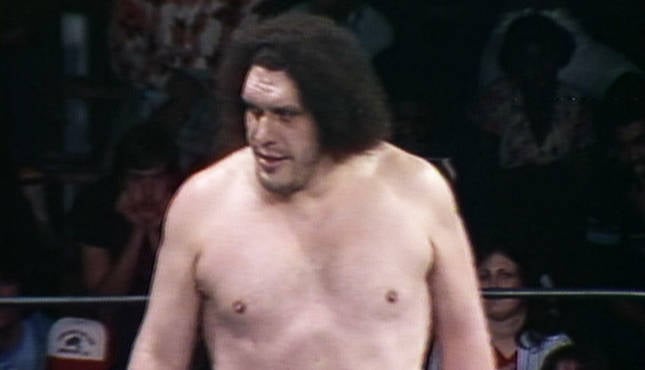The wrestling world is filled with tales that straddle the line between myth and reality, and one of the most intriguing involves the late professional wrestler, Andre the Giant. Reports indicate that Andre, known for his massive stature and larger-than-life personality, allegedly fell asleep during wrestling matches on two separate occasions, leaving fans and historians eager to understand the stories behind these incidents.
The first account of Andre dozing off in the ring comes from fellow wrestler Sgt. Slaughter. In a recent podcast appearance, Slaughter recounted an incident following a trip to Japan, where he faced Andre in a match in a “little town in New Jersey.” Slaughter described applying a front facelock early in the bout, only to find that Andre had fallen asleep shortly thereafter. According to Slaughter, he woke Andre, who responded with visible anger, chasing him around the ring and into the locker room.
Despite the vividness of Slaughter’s story, investigative efforts to pinpoint the exact match have proven challenging. No records exist of a bout between Andre and Slaughter in New Jersey immediately after a Japanese tour. It appears that while the anecdote may have some basis in truth, the specifics are muddled, raising questions about the reliability of the timeline provided by Slaughter.
In contrast, the second incident involving Andre dozing off in the ring is more documented. On June 4, 1983, during a match at the Philadelphia Spectrum, Andre faced John Studd. This match has gained notoriety partly due to its length, with Studd applying a front facelock that lasted an astonishing eight and a half minutes. Commentary from that match included remarks that Andre appeared to be asleep, although fellow commentator Gorilla Monsoon quickly dismissed this notion.
The Wrestling Observer Newsletter later recapped the feud between Studd and Andre, mentioning the sleeping incident. Interestingly, the obituary of Studd suggested that this occurrence took place during their later WWF feud in 1989 rather than during the 1983 match, further complicating the narrative surrounding Andre’s naps in the ring.
Reports suggest that before the infamous June 4 bout, tensions were high. Andre, performing as a fan favorite, reportedly confronted the crowd after they threw trash during his entrance. Speculation exists that his frustration with the audience led him to purposely underperform in the match, though this remains purely conjecture.
As the wrestling community continues to dissect these stories, a deeper understanding of the pressures and experiences faced by performers like Andre the Giant emerges. Wrestling, particularly in the 1980s, was a grueling profession that demanded physical and mental endurance.
In a different facet of wrestling lore, the connection between music and wrestling has also provided entertainment enthusiasts with fascinating insights. For instance, Terry Funk, a hardcore icon, famously used the Eagles’ song “Desperado” as his entrance theme during his time in ECW. The song’s lyrics resonate with Funk’s experiences as a veteran wrestler, grappling with the challenges of age and the allure of the wrestling lifestyle.
Inquiries about professional wrestling’s storied past often lead to engaging discussions, illuminating the trials and triumphs of its legendary figures. For fans and historians alike, understanding these narratives not only enriches their appreciation of the sport but also humanizes the larger-than-life personalities that have shaped its history.
As wrestling continues to evolve, the stories of icons like Andre the Giant and Terry Funk serve as enduring reminders of the passion and dedication that define this unique form of entertainment. For those interested in wrestling’s rich tapestry, the exploration of these anecdotes provides a window into the lives of performers who have left an indelible mark on the industry.
